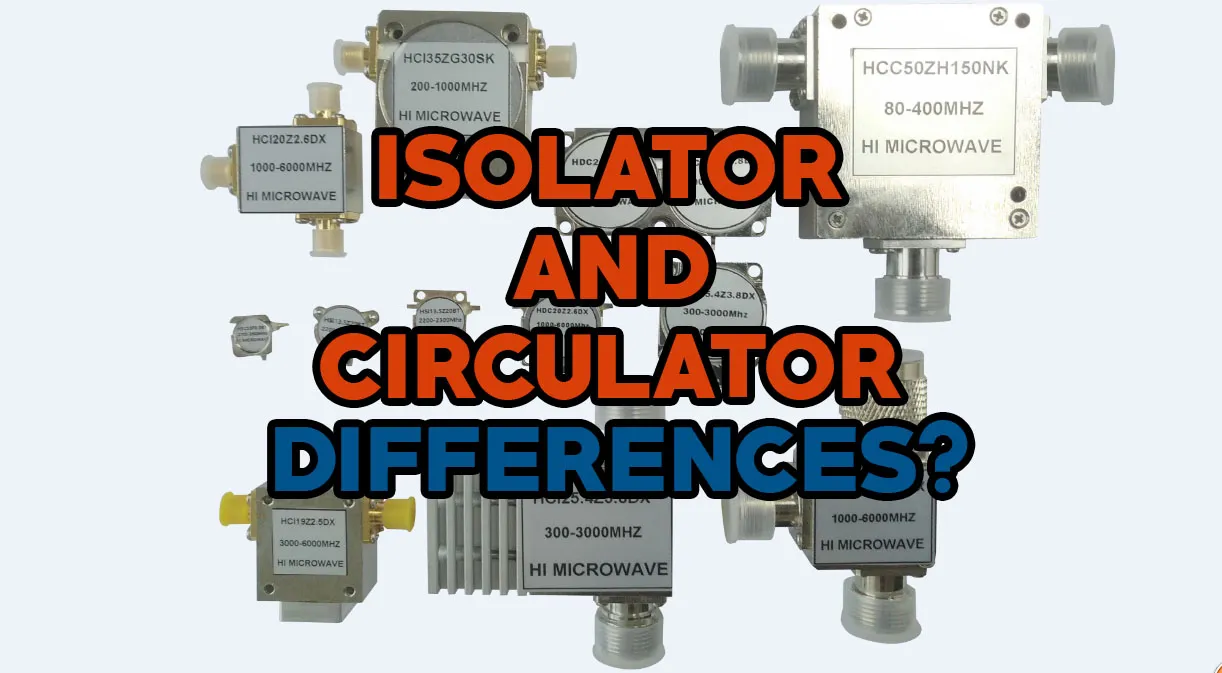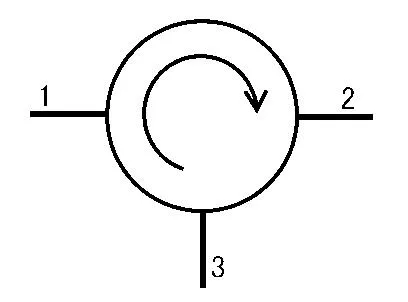Difference Between Isolator and Circulator? [Guide]

Difference Between Isolator and Circulator
There are a lot of electronics components like capacitors, resistors, air core inductors and many more. But here in this article I am going to discuss the isolator and circulator in detail. I am going to give you a complete difference between isolator and circulator which will help you to understand the both electronics components in a better way. So if you want to learn about them, then stick with us till the end of the article! So let's get started.
What is an Isolator?
In electrical engineering, isolators are mechanical devices that disconnect electrical equipment from their power source. This device works only when current does not pass through the system and is an offload isolation device. Maintenance can be carried out safely if there is an isolator present. In addition, the isolators lack arc suppression and have lower breaking capacities.
An electrical device can be disconnected from the main current by this device. A circuit isolator also protects the circuit hardware from any damage caused by short circuits or faults. In addition to being a safety device, it is the device of choice for technicians.
What is a Circulator?
In a circulator, two or more ports are connected to one another. Signals will transmit in a certain direction when they enter any port. The market offers various circulator models from different manufacturers. Different applications use these components, such as radar systems, amplifier systems, transmitting and receiving antenna signals. Waveguide circulators are available in two- and three-port designs with VSWR, insertion loss, and isolation up to 40GHz.
How does it Work?
The circulators control signal flow by stirring water clockwise, as if we were thinking of a cup of water. Dropping a pinch of pepper into a cup and stirring continuously shows that pepper can easily follow the motion of water. Water moves very fast because of its strong motion. Magnetism in the cup is related to the flow of water because the magnetic field interacts with the ferrite material within the circulator. Any RF signals in the near-field (distance between ports) will be tracked by the rotating field if they are inside the frequency band at one port, but not the reverse.

circulator control signal
As shown above, a circulator is schematically illustrated. Signals applied to a port of these devices are indicated by arrows inside the circulator, which indicate the direction of the magnetic field. The applied signal will exit from port-B with 0.4dB loss if port-A is well-suited and port-B is well-suited. It is possible to reproduce the signal from port-B to port-C if there is a difference at port-B.
Difference Between Isolator and Circulator
Although they share similar functions and characteristics, isolators and circulators are separate components in microwave (radio frequency) systems. The following comparison describes the Difference Between Isolator and Circulator in more detail:
Isolator
Function:
In order to minimize transmission reflections back into the source, isolation devices transmit signals unidirectionally.
Purpose:
Signals reflected from RF components are prevented from returning to the source with the use of isolators, such as amplifiers. Signal integrity is maintained, and reflections are prevented from damaging the source.
Applications:
The output stages of amplifiers, for example, use isolation to protect against reflected power.
Construction:
In order to achieve their unidirectional characteristics, insulators often combine ferrite materials with nonreciprocal elements.
Number of Ports:
The input and output ports of an isolation device are typically separate.
Directionality:
There is a one-way connection between the input and the output port of an isolator, so that signals can travel between the input and output ports but can't travel backwards.
Circulator
Function:
When multiple ports are sequentially connected, a circulator allows signals to flow between them.
Number of Ports:
Three ports are generally available on circulators: an input port, an output port, and a third port.
Purpose:
This chapter explores the use of circulators in applications where it is necessary for signals to flow among several different components in a controlled manner. Radar systems, RF transceivers, military radar systems, and any other system where a signal circulates needs these systems to be used.
Applications:
During duplex communication, where transmitted and received signals share an antenna, circulators are used when directionality is crucial.
Construction:
Ferrite materials, as well as non-reciprocal elements, are also capable of creating a path for signal circulation.
Directionality:
A circulator circulates signals in a specific order between ports using bidirectional signals. There is a predetermined path for signal flow.
A monodirectional transmission is normally used by isolators to minimize reflections. Using bidirectional propagation, circulators allow communication between multiple ports. RF or microwave systems can be implemented with either isolators or circulators, depending on the specific requirements. Moreover, if you want to learn more about the Difference Between Isolator and Circulator, then you can tell us in the comment section.
Types of Circulators
In this article of Difference Between Isolator and Circulator, you need to learn about their types too. RF and microwave communication systems use circulation devices to control signal circulation. These devices are non-reciprocal. Signals are typically circulated in a specific order using three ports. If you want to learn about the differences between isolator and circulator, then make sure to read about their types too. Here I am going to tell you in detail about the types of circulators. So without wasting more time, let's get started:
Ferrite Circulators
In contrast to a rotating door with three entrances and at least one compulsory turning sense, these circulators are frequently used as duplexers. In order to achieve this, the electromagnetic signal is communicated through magnetized ferrite to allow the revolving to occur.
An entrance door introduces the signal, which is rotated, and an exit door exits it. In order to reach the antenna port, the transmitter energy turns anticlockwise. It is common to use ferrite in radar circulators.
Non-ferrite Circulators
Circulators made of non-ferrite need extra power due to their energetic nature. Circulators are primarily characterized by transistors, power limitations, and signal-to-noise degradation (S/N). In order to overcome this drawback, varactors are the best solution.
Types of Isolators
During signal transmission, isolation devices minimize the reflection of signals back to their source by allowing signals to be transmitted in one direction. Radio frequency (RF) and microwave systems typically protect reflected power from amplifiers as a result. Isolators have many different types, each with a different function and application. Among the most common types are:
Coaxial Isolator
A ferrite material is wound around a coaxial transmission line. An isolated coaxial package is compact and easy to install. Compact microwave assemblies, for instance, use this component when space is limited.
Waveguide Isolator
When waveguide-based systems are used, they require cylindrical or rectangular waveguide structures with ferrite materials to achieve isolation. Waveguide systems cannot use coaxial components.
Drop-In Isolator
An insertable component used in microwave circuits to link up other components. Integrated and compact, it offers many benefits. Space-constrained applications like microwave integrated circuits usually use this type of transistor.
RF or microwave systems have specific needs that should be met by the type of isolator used. A frequency range, power handling capability, and physical form factor all play a key role in choosing an isolator for a particular application.
In order to learn about the difference between isolator and circulator, then it's important to know in detail. You need to learn about their types, design, working principle to get the important and main differences between each of them. In this article, we have explained everything in detail for you. So don't worry about it!
Faqs
Question 1: What is the principle of a circulator isolator?
Answer: A ground-independent signal, power source, and signal isolator are available. Materials such as ferrites and nonferrites are used for making them. Unlike an isolator, which has two ports, the circulator has three ports in order to connect to a matched load.
Question 2: What is the purpose of a circulator?
Answer: An oscillator transmits power in a predetermined order from one port to another. A circulator is a passive, three-port, ferromagnetic device that is non reciprocating. In the opposite direction, circulators behave quite differently from reciprocal devices, which are non-reciprocal devices.
Question 3: When should I use an isolator?
Answer: Electric shocks are usually prevented with isolator switches, which are used in damp environments. An off switch interrupts a circuit by preventing current from flowing when it is flipped off. Working on the circuit in a safe manner is made possible by this.
Question 4: What is the working principle of an isolator in a microwave?
Answer: There are two ports on an isolator, but the microwaves or radio frequencies are transmitted only in one direction. The propagating wave interacts with the material in these devices, resulting in non-reciprocity. It is possible for the wave to propagate in a different direction.
Question 5: What are the isolator standards?
Answer: Partially discharged isolator components must be tested for possible breakdown of their internal insulation by isolator component standards. It is possible to detect small imperfections over time with partial discharge, an IEC/VDE component test for isolators.
Final Verdict
So we come to an end. In this article, I have discussed the difference between isolator and circulator for you. With the help of this article, you will learn about their types, design, working principle and all the important differences which everyone needs to know. So if you still have any questions about it, then don't forget to tell us in the comment section. We’d love to help you all the time! That's it for today's guys see in the next article!
Regulated vs Unregulated Power Supply: What's the difference?
Understanding Coupled Inductors: Operations and Practical Applications
Flexible Sensor Complete Guide
NC7SZ125P5X Overview: Features, Applications and Datasheet
Intelligent Sensors: Definition, Configurations, and Utilizations
Exploring Varied Types of Inverters
TXB0104PWR Review: Overview, Features, and Applications
10k Resistor Color Code: Everything You Need to Know
CR2450 vs CR2032 Battery: What are the Differences?
Buck vs Boost Converter: Everything You Need to Know










